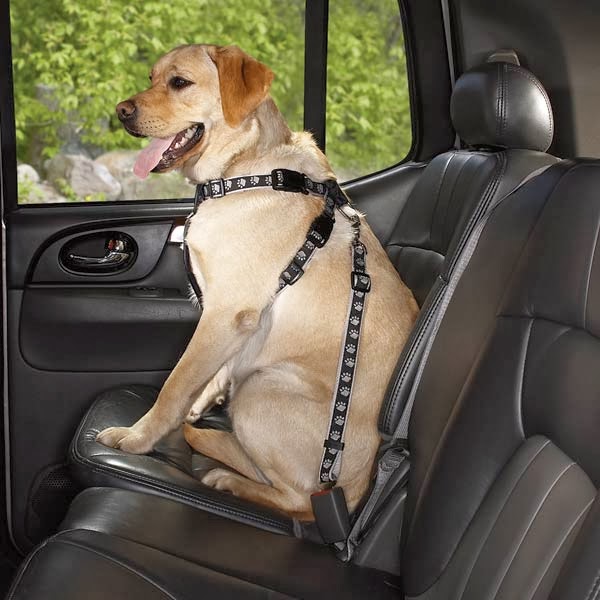 |
| Harness with tether |
 |
| Traditional seatbelt |
A lot of dogs do not ride along with us in our car the way we truly want them to, but is that the dog’s fault? If you have not taken the time to teach your dog how to act in the car, then how can you expect him to behave? Riding in the car requires training, just like anything else. You need to teach your dog how behave and what is expected of him while you are busy driving. Let’s start from scratch.
1. Decide what you want your dog to do while riding in the car and make sure that everyone who will be driving with your pup is in agreement on this. The rules must be established first.
2. Put your dog in the car in the location of your choosing. I recommend the back seat, or the back section of a wagon. I think we can all agree that the dog in the driver’s lap is a bad idea! You then move to the driver’s seat and do not turn the car on. Wait. If your dog stays where you put him, give him praise and perhaps a small treat. Keep in mind we do not want to have to resort to food rewards later when we are actually trying to drive, but for initial training this is OK. If you give a treat, put it on the seat where he can easily reach it and remain in a good spot.
Example: I have decided my dog needs to ride in the back seat, but I do not care if he is sitting, lying, or standing. I can reward any behavior as long as he remains in the back seat. However, if I have decided my dog needs to sit in the back seat passenger side, then I can only reward that specific behavior. I can give him commands to indicate this to help the process.
3. When your dog breaks your rule, he needs to be put back in the proper spot and praised as soon as he returns there. Plan to repeat this process several times during your training session while the car is parked. Keep the training session to 15 minutes or less at first. As time progresses, you will add challenges to the ride (such as driving). Keep in mind this important step. You cannot correct him when you are actually driving, so he needs to know the “job” before you venture out. It will take several training sessions.
4. Begin adding levels of difficulty to the training sessions. Start the car (but don’t drive at first), then drive to the mailbox, then around the block, and so on. You can give your dog verbal cues to help while driving, but by this stage you should not have to turn around to handle him. If he’s becoming unruly, then pull over and focus on his training.
5. If it’s just not working, then you may need an aid. Dog seatbelts are a great idea. Their main purpose is to keep your dog from ejecting from the car in an accident, but they may also help to keep him in the same part of the car, like the back seat. Yes, some dogs climb up front while you are trying to drive – not good! There are also attachment pieces that click into the seatbelt receiver that keep the pet even closer to their spot. You will need to use a harness on the dog when using this connector – do not attach this to their collar. Finally, you may need to simply put your dog in a crate for travel. Be sure to give them a chew toy or treat for riding nicely, but in a crate your pet is extremely safe and so are you. It’s a great option if the training is not going well or if you want to skip training all-together.
Happy driving!
Dr. Amy Hellard
West Chester Veterinary Care
www.westchesterveterinarycare.com
photos courtesy of www.petautosafetyblog.com





